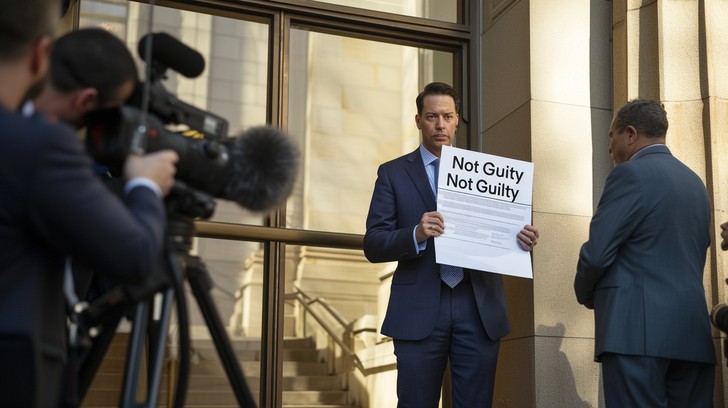Now Reading: Concept of Strict and Absolute Liability
-
01
Concept of Strict and Absolute Liability
Concept of Strict and Absolute Liability
INTRODUCTION
Strict liability and Absolute liability are defined as part of Law of Torts. These both have similar meaning with some exceptions. Strict Liability defines that one must be liable for damage he has caused due to usage of dangerous things, escape, non-natural use of land, but with some exceptions like if plaintiff has given its consent or when the fault is of the third party or when damage occurred is due to the act of god or is caused while following the statutory duty. Absolute liability is wider sense of this liability with no exception. It states that a person is liable to pay for damage even if he has taken due to care of its property. He cannot take any defenses as stated in the case of Strict Liability. The two landmark cases of these concepts are Rylands Vs. Fletcher and M.C. Mehta Vs. Union of India.
STRICT LIABILITY
This concept emerged in the year 1868 after the famous case, Rylands Vs. Fletcher[1]. In this case the defendant has built a reservoir ignoring the fact that below it there is a disused mine shaft which will be destroyed due to making of a reservoir and the same thing happened and all the water of the reservoir went into the plaintiff’s mine. Due to this act plaintiff had to suffer huge loss as its whole mine was destroyed so, he filed a case against the defendant. The defendant gave many defenses like he has taken proper measures. The court in its judgement said that the making of the reservoir was itself an unnatural use of land also, the defendant was dealing with dangerous thing so, the defendant is liable to pay compensation to the plaintiff even if he takes proper care. This is the reason why this liability is also known as Rylands or No fault liability.
ESSENTIAL
The essential features of Strict Liability are:
· DANGEROUS THINGS
It means that if a person uses dangerous things and due to which any damage occurred, then that person is liable to pay compensation to other person for the damage caused to him. According to this principle, dangerous thing means anything like large quantum of water, gas, electricity, explosive, etc. In the Rylands Vs. Fletcher[2] case also, due to the presence of large quantum of water it was considered as dangerous thing and defendant has to pay compensation to the plaintiff.
· ESCAPE
Another essential of feature of Strict Liability is escape which states that all the things which causes harm to another person if escaped from the property of the person using it and should not be in reach of the person. For example, if a person A has grown some dangerous plants which may cause serious harm to any person or animal consuming it. If a person B’s Sheep ate that plant because some of them have been fallen in B’s land so, in this case A is responsible to compensate B for his loss but if B’s Sheep enters A’s land and ate that plant then A is not liable for the loss.
In the case of Read Vs. Lyons & Co.[3] it was held that if there is no escape from the property of the defendant then the defendant is not liable to compensate the plaintiff for the loss caused to him.
· NON- NATURAL USE
It means that if a stored water is used for a natural use like domestic purpose then a person cannot be held liable for any harm occurred due to it, but if it is used for non- natural use like in the case of Rylands Vs. Fletcher[4], the defendant used the land for making of reservoir to benefit its mill and which created danger for others and due to which he was liable for the loss occurred to the plaintiff.
EXCEPTIONS
There are some exceptions of this concept which are:
· DEFAULT OF THE PLAINTIFF
According this exception, it is stated that the defendant will not liable for loss occurred to the plaintiff if he is itself responsible for the act, even if a person has taken all the reasonable care and the plaintiff due to his own fault suffered injury, then he itself is liable for the harm and defendant is free from any charge. In the case of Ponting Vs. Noakes[5] same thing was established.
· ACT OF GOD
It is another exception, which states that if the loss is occurred by the act of god that means by any natural calamities like flood, earthquake, etc. then nobody will be at fault because these things are beyond the control of humans.
· CONSENT OF PLAINTIFF
This exception says that if a person has the knowledge of the harm which could be caused by during a particular act and still he did that act then he is liable for his own act. He cannot make any other person liable for that act until and unless that person is negligent in any way and of which he had no knowledge. This is also known Volenti Non Fit Injuria.
· ACT OF THE THIRD PARTY
According this, if harm is caused by an act of stranger or third party and there is default on the part of either the plaintiff or defendant but due some act of a stranger the loss occurred so in that case, the defendant is not liable for that act. The word stranger or third party does not include any servant, agent, etc. of the defendant.
· STATUTORY AUTHORITY
The word ‘statutory authority’ means any authority which governed by law and at the instructions of this authority a person commits an act which led to damage to any person then that person who acted on the instruction of the statutory authority will not be held liable because he obliged to follow the demands of that authority.
ABSOLUTE LIABILITY
This concept is similar to the Strict Liability, but is wider in scope and is without any exception which are there is the concept of Strict Liability. According to this concept, a person cannot take defense of the exception lead down in the Strict Liability. It says that if a person has damaged the property of another than it is liable for the act, he cannot escape from the liability. This concept came in India after the M. C. Mehta Vs. Union of India[6] case, in this case there was an industry named as Shri Ram Food & Fertilizers Industry Private Limited Company in which Oleum Gas leaked due to which many people got injured and some of them died. After this case Public Interest Litigation (PIL) was filed to take action against this disaster. The Court in this case held that the industry is liable to a huge amount of compensation to the victims irrespective of the fact that exceptions of Strict Liability should be taken into consideration while deciding this types of cases. After this case, the concept of absolute Liability was introduced because in a country like India the concept of Strict Liability is not suitable so, the concept of Absolute Liability emerged. Further, Public Liability Insurance Act, 1991 was introduced so, that the victim should get faster relief as after this case another case known as Bhopal Gas Tragedy case which followed the same concept.
INDIAN PERSPECTIVE VS. ENGLAND PERSPECTIVE TOWARDS THESE LIABILITIES
India and England are two different countries with different economies and industrial style. So, in both the countries different types of liabilities are popular. In India, Absolute Liability is followed and defined after the M. C. Mehta Case[7] as Justice Bhagwati, said that in India economy and industrial pattern difference so, the concept of Absolute Liability needs to be adopted to help victims from the hazardous substances used by the industries. In England, the concept of Strict Liability was evolved and followed in England though the concept of Absolute Liability also exists but it is not defined anywhere. The House of Lords usually call it as the Strict Liability without any exceptions.
CONCLUSION
Strict Liability and Absolute Liability are two similar but different topics of same branch of law that is Law of Torts. Absolute Liability is wider than Strict Liability. Both the types of law is based on No Fault Liability, but with a difference that is in Strict Liability there are certain exceptions and if a case comes under that exception then the defendant is not liable for the act. Absolute Liability is the one in which defendant is liable to pay compensation, he cannot take the defense of any of the exceptions. This liability is more popular in India because of the Indian Industrial style and economy type. Though it is England also but is not described properly there. The Lords of England told about this concept but as Strict Liability without exceptions. So, it can be said that both same but different in itself.








